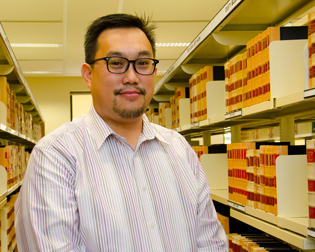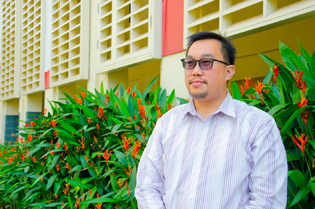Why Singapore’s English Teachers Should Embrace Singlish, Not Fight It
Is it time for Singaporean educators to embrace Singlish as a legitimate learning tool? What the Research […]
Read More
They say necessity is the mother of all invention. Now more than ever, inventive thinking is needed in schools and in society. Why the growing emphasis? And what is the place of invention in the language classroom?
Creativity isn’t just a final product – it’s a process. Part of this process is inventive thinking. What is inventive thinking? And how can teachers inculcate inventive thinking in their students? PhD student Aliamat Omar Ali sets us thinking.
Inventive thinking is originally about inventing innovative products and hi-tech solution, where physical products are invented to solve material problems. This kind of thinking has been found to be useful in solving non-material problems.
 “Inventive thinking is actually a mind-set of looking at challenges in a positive way,” says Aliamat, who has chosen to do his PhD on this topic. “In my research, my focus is about changing students’ perspectives, to be innovative and inventive in daily life.”
“Inventive thinking is actually a mind-set of looking at challenges in a positive way,” says Aliamat, who has chosen to do his PhD on this topic. “In my research, my focus is about changing students’ perspectives, to be innovative and inventive in daily life.”
He believes this is necessary in a constantly changing society, especially one that seeks to advance socially and expand economically. At the crux of this way of thinking is a shift in focus from the final product to the thought process.
“What is happening now is that inventive thinking is viewed as a product. The process is not explained nor taught in classrooms,” notes Aliamat.
He wants to make the process of solving a problem visible. “By teaching this process, we are changing this perspective of students, to make them see challenges and hurdles in a positive way.”
Aliamat’s research is based in Brunei Darussalam, where he is from. Creative and critical thinking is not new to schools in Brunei, many of which use a thinking programme based on Edward de Bono’s Cognitive Research Trust (CoRT). But not all teachers are seeing the desired outcomes.
“My concern is that the CoRT programme is in English. Research conducted in Brunei found that some students can’t cope because the majority of them are not comfortable with learning CoRT in English,” he explains.
– Aliamat Omar Ali, Universiti of Brunei Darussalam
Although English is the main language of instruction in Brunei schools, Malay is commonly used outside the classroom. The teachers believe most students find it easier to think and learn in Malay as that’s the language they are most comfortable with.
In addition, without knowing the process of thinking inventively, many students become complacent and use the standard solutions, which are usually neither original nor novel.
Concerned that this is stifling creative thinking, Aliamat is keen to find a way to help students think out of the box. “I am trying to propose an alternative to CoRT by teaching inventive problem-solving methods to students in the Malay Language classroom.”
“Inventive thinking is one of the main types of skills that is needed in the 21st century,” Aliamat points out. “The objective is to develop students to generate good solutions to a problem – original and novels solutions, not common ones.”
 Putting the theory of inventive problem solving into practice, Aliamat hopes this skill can be inculcated through composition writing in the Malay Language classroom.
Putting the theory of inventive problem solving into practice, Aliamat hopes this skill can be inculcated through composition writing in the Malay Language classroom.
He is looking at how the process of inventive thinking can encourage students to write more creatively, by helping them to come up with original ideas and not rely on standard answers.
For example, in a traditional writing assignment, students are given a topic and would contribute points that are predictable and typical. Instead, students can be given a problem and asked to suggest original solutions.
“By giving students some sense of problem solving in writing, students can come up with solutions themselves – not just the right kind of problem to be solved, but the ‘how to solve’, that is, the process of defining and solving a problem. This minimizes rote learning and makes the classroom more student-centred.”
The process of inventive thinking helps students think critically, systematically and inventively, rather than just concentrating on getting the right outcome. They will also become more confident in their answers.
– Aliamat on the goal of inventive thinking
The process helps to hone the quality of ideas that are generated and also teaches them to be responsible for the ideas they generate.
These benefits will stand them in good stead outside the classroom, too. Aliamat believes that if we can develop our students to be inventive thinkers now, they will be more innovative and adaptable when they go out into the marketplace in future.
“I believe it will not only help the students to write more interesting compositions in the language classrooms, but also help them to see real-world challenges from a positive perspective,” says Aliamat. “It also makes them better and more proactive contributors to society.”
“Every problem has its solution,” Aliamat reminds us. He is sure this mind-set will take them a long way in life.
Useful Resources
North Central Regional Educational Laboratory. (2003). enGauge 21st century skills. Naperville, IL: Author.
Sokol, A. (2008). Development of inventive thinking in language education (PhD thesis). Retrieved from https://www.jlproj.org/this_bibl_e/books/TA_thesis_ch2.pdf
Trilling, B., & Fadel, C. (2009). 21st century skills: Learning for life in our times. San Francisco: Jossey-Bass.